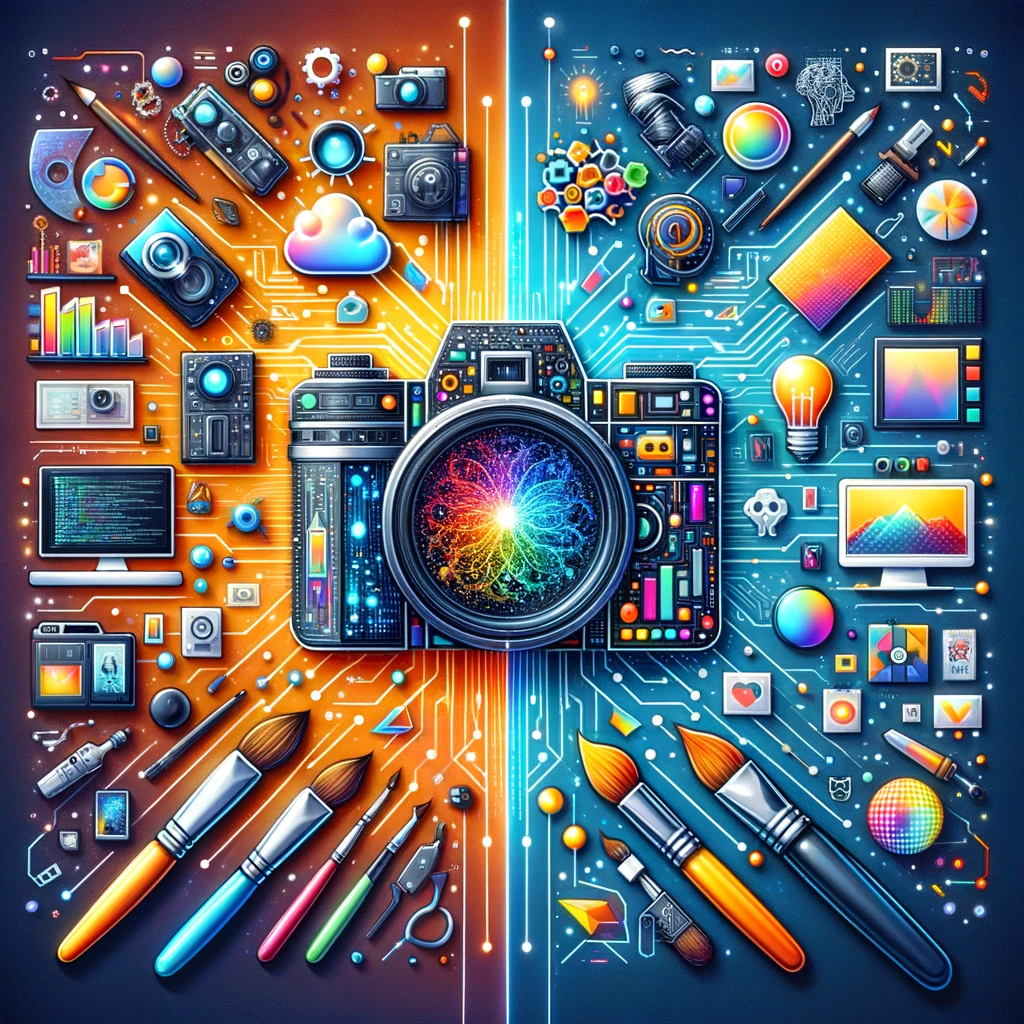The digital landscape is undergoing a seismic shift, thanks to the advent of Artificial Intelligence (AI) in image creation. This technology is not just altering the way content is produced; it is revolutionizing it. AI image creation tools, leveraging deep learning and neural networks, are enabling content creators to break through traditional barriers of creativity, efficiency, and personalization. Below are ten ways AI image creation is transforming the content creation game.
1. Unprecedented Speed and Efficiency
AI image generation tools are designed to produce high-quality images at an unparalleled speed. This efficiency is a game-changer for content creators who are under constant pressure to deliver fresh and engaging content. By significantly reducing the time required to generate visual content, AI allows creators to focus more on strategy and less on execution. This shift towards faster content production without compromising quality is enabling creators to meet and exceed the growing demands of their audiences.
2. Cost Reduction
The traditional process of creating high-quality images often involves expensive software and professional expertise. AI image creation democratizes this process by offering a more affordable alternative. With AI, content creators can generate professional-grade images without the need for costly resources. This accessibility opens up new opportunities for independent creators, small businesses, and startups to produce compelling visual content that can compete with larger entities.
3. Enhanced Creativity
AI image generators are not just tools; they are collaborators that expand the creative horizons of content creators. By inputting a simple text prompt, creators can explore infinite creative possibilities and generate images that were previously unimaginable. This ability to transcend traditional creative limitations allows for the production of unique and captivating content that can capture the audience’s attention in new and unexpected ways.
4. Customization and Personalization
The power of AI image creation lies not just in generating content but in customizing it. AI tools can tailor images to specific audiences, contexts, or even individual preferences. This level of personalization enhances the relevance and impact of the content, making it more engaging for the target audience. Personalized visual content is more likely to resonate with viewers, leading to higher engagement rates and a stronger connection with the brand or creator.
5. Seamless Integration with Other Technologies
AI image creation tools are increasingly being integrated with other technologies, such as virtual reality (VR), augmented reality (AR), and web design platforms. This integration extends the application of AI-generated images beyond traditional content channels, offering new ways to experience and interact with visual content. For instance, virtual storefronts can use AI-generated images to create immersive shopping experiences, while educational content can be enhanced with interactive visuals.
6. Accessibility and Inclusivity
AI image generation tools are making content creation more accessible and inclusive. By lowering the technical and financial barriers to creating high-quality images, these tools are empowering a broader range of individuals to express their creativity. This inclusivity fosters a more diverse content landscape, where voices from different backgrounds and perspectives can be heard and seen.
7. Data-Driven Content Creation
AI image generation is often powered by vast datasets, enabling content to be created that is informed by data. This data-driven approach can lead to content that is more aligned with audience preferences and trends. Content creators can leverage AI tools to analyze and predict what types of images will resonate most with their audience, leading to more strategic and effective content.
8. Evolving Visual Trends
AI is at the forefront of identifying and generating content based on evolving visual trends. These tools can quickly adapt to and incorporate the latest design styles, ensuring that content remains fresh and relevant. For content creators, this means staying ahead of the curve without constantly researching and manually updating their visual content strategy.
9. Scalability
AI image creation tools offer scalability that traditional content production methods cannot match. Whether a creator needs one image or thousands, AI can accommodate these demands with consistency and quality. This scalability is crucial for content creators looking to expand their reach or diversify their content offerings without a proportional increase in production time or costs.
10. Sustainable Content Production
Finally, AI image creation contributes to more sustainable content production practices. By digitizing the image creation process, it reduces the need for physical resources and minimizes waste. Additionally, the efficiency and customization capabilities of AI help in producing content that is more likely to be effective and enduring, reducing the need for frequent updates or reworks.
In conclusion, AI image creation is not just changing the game for content creators; it is redefining it. From democratizing access to high-quality visual content to fostering creativity and efficiency, the implications of this technology are profound and far-reaching. As AI continues to evolve, so too will its impact on the content creation landscape, promising a future where the only limit is the creator’s imagination. The integration of AI into content creation marks a pivotal moment in the digital age, heralding a new era of innovation
